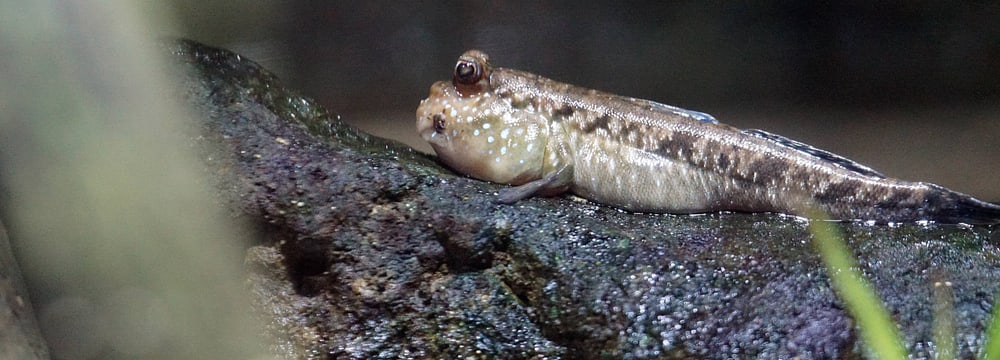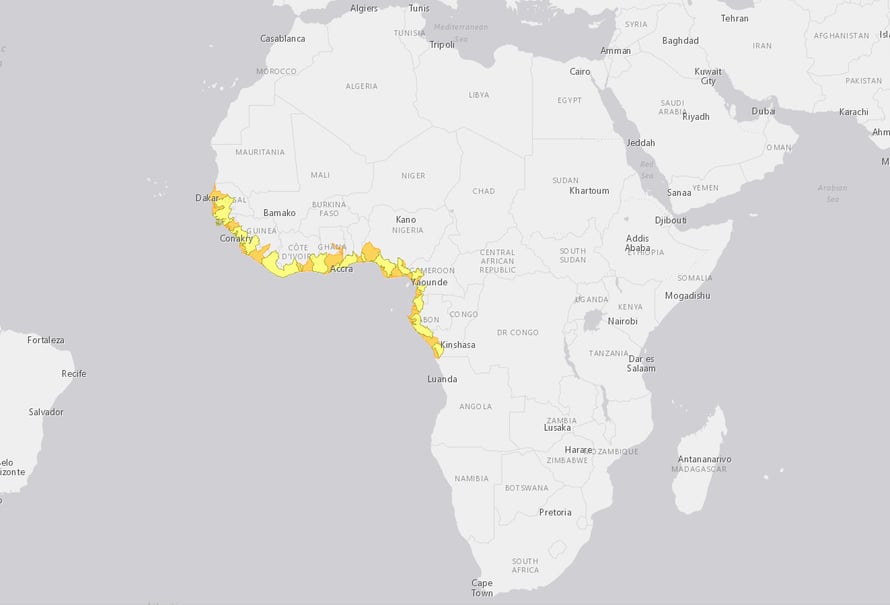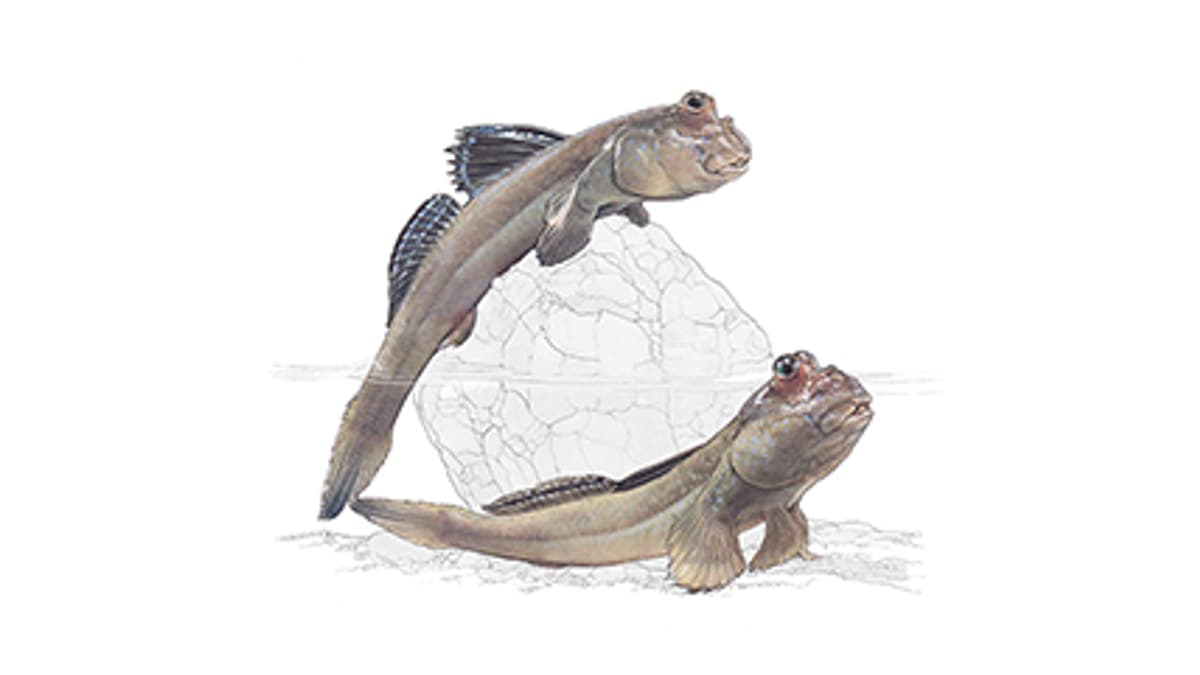
Atlantic mudskipper
Periophthalmus barbarus
Mudskippers are special in several ways: For instance, they walk ashore, they have stalked eyes and they climb up the roots of mangroves.
For a gill breather, a walk on the beach is a particular challenge. When mudskippers go walkabout, they take some water with them in their gill pockets. This water comes into contact with atmospheric air, which enriches it with oxygen. Absorbing oxygen through the skin and oral mucous membranes supports gill breathing.
The eyes of mudskippers stand out on top of their head. They can move independently and allow for a 360° panoramic view, which has found its way into the genus name: Periophthalamus (“Round eye”). This all-round vision remains even if the animals are submerged in shallow water. To prevent the eyes from drying out on land, the mudskipper can moisten them using a special skin flap.
Mudskippers support themselves ashore on their highly developed, limb-like pectoral fins. Using their fins and supported by their powerful tail, they crawl ashore and can also hop to escape. With the help of their pectoral fins, they can climb higher up, into places like rocks or mangroves.
| Closest relatives | Acanthopterygians, Gobioidei, mudhoppers (18 species) |
| Habitat | Brackish water in muddy coastal waters and estuaries |
| Behaviour | diurnal, most of the time out of the water |
| Diet | Insects and small crabs but also vegetable material |
| Body length | up to 16 cm |
| Spawn | unknown, digs passages into the ground where they reproduce |
| Breeding period | unknown |
| Use | unknown |
| Current status | unknown |
| At Zurich Zoo since | 2016 |
geographic range

Sponsors
| D. Fröhlich, Zürich | |
| N. Bräker, Niederglatt | |
| G. Stöckli, Zug | |
| K. Weber, Zug | |
| S. Müller, St. Gallen | |
| S. Jufer, Hünenberg | |
| K. Müller, Uster | |
| B. Pleban, Jona |

